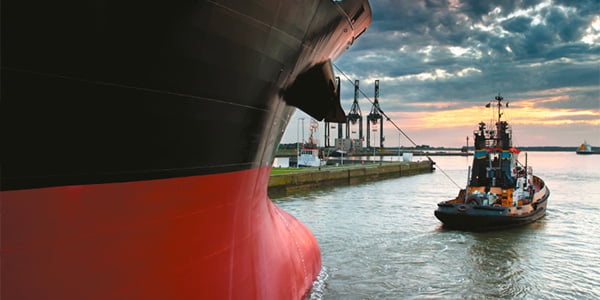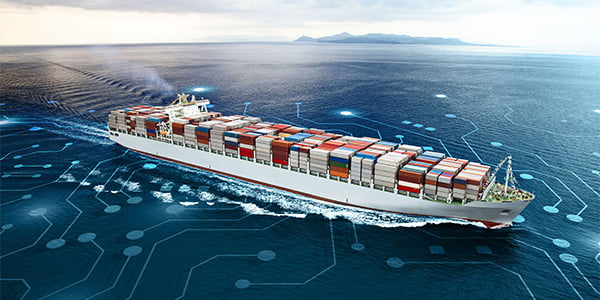Marine IT
Transforming Vessel Operations with
Robust, Scalable Information Technology
Get a quote todayDefinition & Benefits
Marine IT refers to the strategic deployment of information and communication technologies on board yachts, vessels, and ships to enhance operational efficiency, safety, and crew welfare. By integrating networking hardware, servers, software platforms, and IoT sensors, Marine IT delivers:
- Unified Connectivity: Satellite, cellular, and Wi-Fi networks seamlessly tied together for global coverage.
- Data-Driven Insights: Real-time monitoring of systems—from engine health to fuel consumption—powers predictive maintenance and route optimization.
- Digital Services: Crew welfare portals, remote diagnostics, and cloud-based applications improve morale and reduce off-hire time.
- Scalability & Flexibility: Modular IT architectures adapt to vessel size, mission profile, and emerging technologies.

Installation & Integration
Needs Assessment & Network Design: Map existing IT/OT infrastructure, define bandwidth and redundancy requirements.
Commissioning & Training: End-to-end testing, crew workshops on network dashboards, user-access management, and basic troubleshooting.
Connectivity Systems: Satellite VSAT/Starlink and 4G/5G modem installations with automated failover logic.
Hardware Deployment: Rack-mount servers, managed switches, and ruggedized routers are installed in secure, climate-controlled compartments.
Software Configuration: Virtualization platforms (VMware, Docker) for application hosting; secure VPN gateways and firewalls.
Technical Performance
Marine IT platforms are engineered for high availability and resilience in harsh environments:
- Network Throughput: Aggregate bandwidths from multiple links (e.g., VSAT + cellular) with SD-WAN optimization.
- Latency: Satellite links balanced with low-latency LEO services; local caching for critical applications.
- Reliability: ≥ 99.9% uptime with dual-redundant power feeds, UPS backup, and automatic link-switching.
- Security: Segmented VLAN architecture, intrusion detection/prevention, and periodic vulnerability scans.
Cost Expectations
Investment in Marine IT includes hardware, installation, licenses, and ongoing support. Rather than static price lists, we offer tailored quotes based on your vessel’s IT footprint, desired service levels, and compliance requirements.
Ensure the optimal balance between capability, uptime, and cost.
Use Cases
- Commercial Fleets: Centralized fleet-management portals with real-time vessel dashboards and KPI reporting.
- Luxury Yachts: Guest Wi-Fi, streaming entertainment, and smart-cabin automation controlled via mobile apps.
- Offshore Platforms: Secure remote access to SCADA and maintenance systems for shore-based engineers.
- Research Vessels: High-bandwidth transfer of scientific data and remote collaboration with onshore labs.
- Passenger Ferries: Integrated ticketing, passenger information displays, and onboard POS systems.

Regulatory & Compliancce
IMO & SOLAS: IT solutions integrated within the Safety Management System, meeting cyber-risk requirements.
Cybersecurity: Continuous monitoring, incident-response planning, and alignment with ISO 27001 and NIS 2 directives.
GDPR & Data Privacy: Secure handling of personal data for crew and passengers with encryption and access controls.
IEC & IACS Standards: Marine-rated hardware certified to IEC 60945, IEEE 802.11, and other EMC/EMI thresholds.
FAQS
How is network redundancy achieved on board?
By combining multiple links—VSAT, LEO (Starlink), and cellular—through an SD-WAN router, traffic automatically fails over to the next available path without service interruption.
Can I host my own applications on board?
Yes. We deploy virtualization platforms (e.g., VMware, Docker) on ruggedized servers, allowing you to run custom applications—ERP, email, or specialized analytics—directly onboard.
What bandwidth-management tools are available?
Marine IT systems include QoS policies, traffic shaping, and real-time monitoring dashboards to prioritize mission-critical traffic (e.g., ECDIS, VoIP) over bulk transfers.
How do I ensure my IT systems stay secure and up to date?
We implement segmented networks, regular vulnerability assessments, automated patch management for IT and OT devices, and crew training programs to maintain a robust cybersecurity posture.